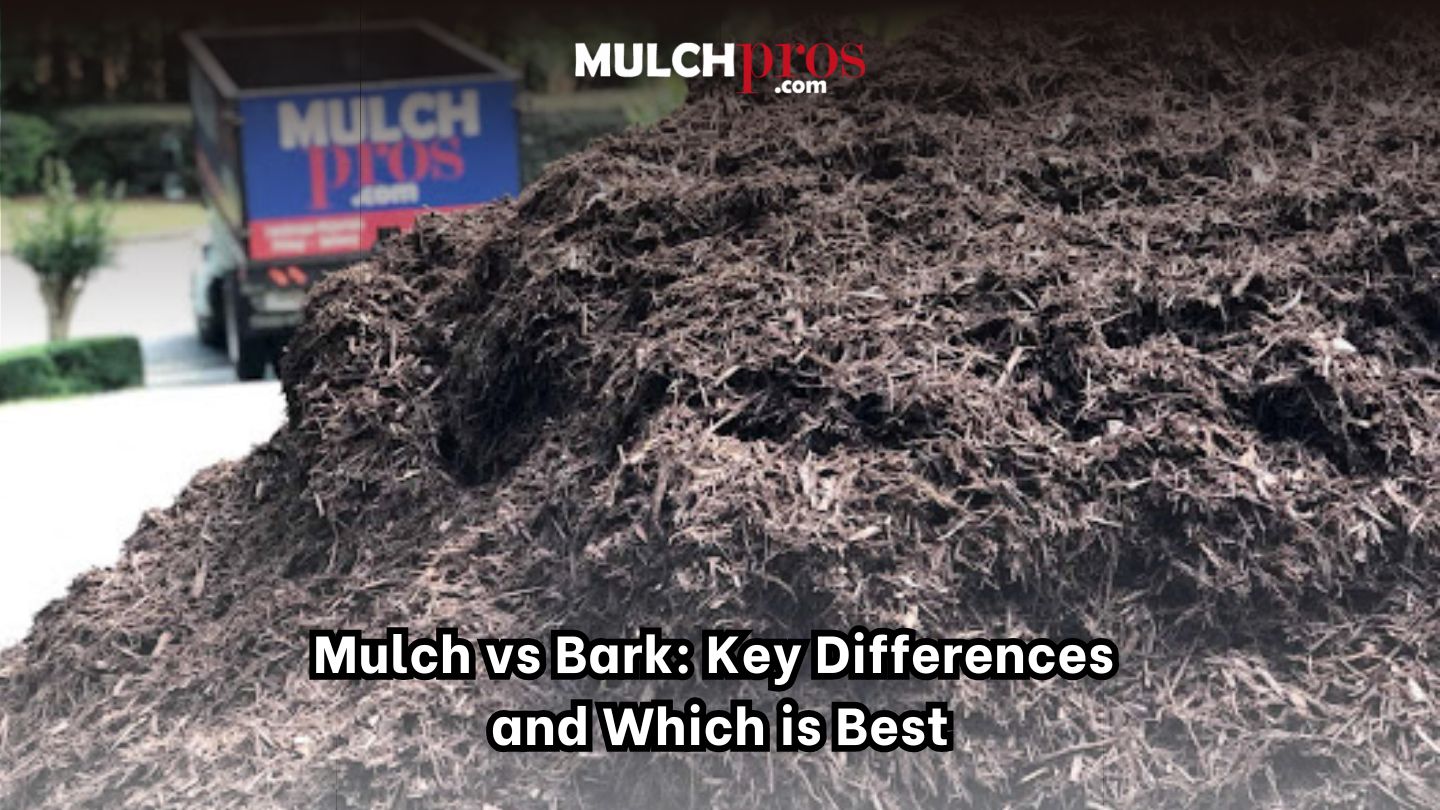When it comes to landscaping, choosing the right ground cover can make a big difference in the look and health of your garden. Mulch and bark are two popular options, but which one is right for your needs? In this blog, we’ll break down the key differences between mulch and bark and their benefits and help you decide which is the best choice for your outdoor space.
Key Takeaways
- Mulch is versatile, providing moisture retention, weed suppression, and soil enrichment, while the bark is valued for its durability and aesthetic appeal.
- Cost and garden requirements significantly influence the choice between mulch and bark, with mulch generally being more affordable and suitable for plant health enhancement.
- Correct application techniques, including maintaining a depth of 2-4 inches and ensuring direct soil contact, are crucial for optimizing the benefits of both mulch and bark.
Understanding Mulch and Bark
In the domains of landscaping and gardening, bark mulch stands as a crucial component. It is commonly employed to cover soil surfaces due to its myriad benefits tailored for diverse horticultural pursuits. Mulch serves multiple purposes: it conserves water by retaining moisture in the soil, deters weeds from encroaching on plants’ space, and assists in regulating soil temperature — features that make it an adaptable option among garden enthusiasts. Conversely, wood bark offers both function and visual appeal. Sourced from trees’ outer layers, this robust material lends itself more towards ornamental landscape designs.
Both mulch and wood bark aim to boost your garden’s vitality and visual charm. At the same time, general mulches draw upon a varied palette of organic materials including leaves, straw, pine needles, or wood chips for their constitution. Bark mulch exclusively comprises those fragments cast off from the exterior strata of trees—celebrated not only for its longevity but also for enhancing gardens with an aesthetic edge. Choosing between these two options hinges primarily on each gardener’s unique requirements pertaining to looks and functionality within their green spaces.
Grasping the distinct attributes that define both mulch and wood bark remains key in appreciating what they have to offer regarding utility—and where best they can be applied within any given landscape design context—as we delve deeper into analyzing their respective contentions and natural processes involved.
What is Mulch?
A protective layer called mulch is typically made up of organic materials, including pine straw needles, leaves, straw, wood chips from hardwood trees or softwoods like pine, and grass clippings. These components are often processed using a device known as a wood chipper that shreds the material into smaller pieces to ensure uniformity in size and consistency. This preparation allows for an even spread around garden plants.
Among these options is wood mulch, which stands out for its natural appearance and the beneficial qualities it imparts to the soil. It’s available either as pure hardwood mulch derived from oak or maple trees or as softer varieties sourced from woods such as pine. You can also opt for dyed mulch offerings that come in several colors designed to complement your landscape theme seamlessly.
As this blend of organic matter breaks down over time, it significantly contributes vital nutrients back into the earth, fostering robust plant growth—an advantageous cycle nurtured by well-chosen and applied mulching practices.
What is Bark?
Bark mulch is made from the outermost layers of tree bark, harvested from a variety of trees such as cedar, pine, cypress, oak, and maple. The procedure for producing bark mulch involves separating the wood bark from the trunk of the tree and then using a machine known as a de-barker to grind it into smaller fragments. These pieces result in a type of mulch that is appreciated for both its resilience and uniform look.
The aesthetic qualities offered by bark mulch are particularly notable. A bark’s color can differ greatly depending on which species it comes from. It ranges between deep brown shades and red tones, which enhance the beauty of garden beds and landscape paths. Pine bark mulch stands out due to its thicker texture relative to other variants offering distinct visual appeal within landscaping projects.
For those who prioritize both appearance and functionality in their gardening endeavors, choosing bark mulch tends to be highly preferred due to this excellent combination of features.
Appearance and Types of Mulch and Bark
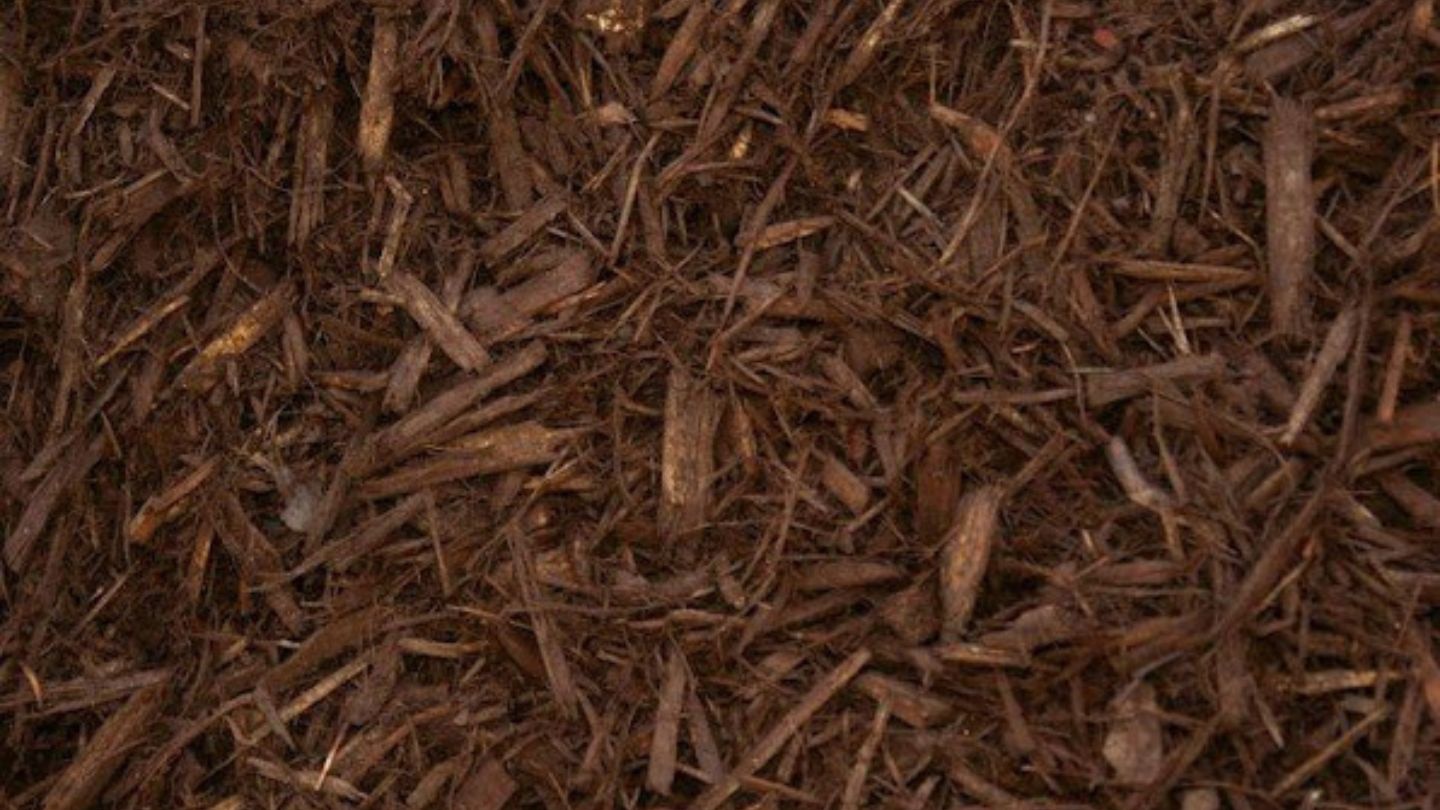
The visual impact of bark mulch on your garden’s aesthetic can be quite significant. A multitude of mulching options, including wood mulch, rubber mulch, and various other organic materials, provide not only unique looks but also distinct practical advantages. Bark mulch, in particular, sourced from an array of tree varieties such as cedar and cypress, is often selected for both its appealing natural look and its resilience.
Typically presenting a diverse and naturally occurring appearance are types of earth-toned mulches that effortlessly blend into many landscaping designs. Contrarily, bark usually exhibits a more uniform texture with consistent coloring, which significantly improves the attractiveness of pathways and garden beds. Grasping the distinctions between different kinds of ground coverings, along with their individual visual qualities, will assist you in finding the perfect choice to meet your gardening objectives.
We aim to delve into detailed analysis regarding how both regular forms of ground coverage and wood-based ones improve overall ambiance while considering aspects involving each substance used, aiming for illustration enhancements applied within landscape settings through these resources—mulches or barks specifically—their effect upon outward attractiveness pertaining to one’s yard space.
Visual Appeal of Mulch
Wood mulch, which takes on earth-toned hues, complements the inherent allure of garden landscapes. Crafted from organic materials, it fosters a cozy and welcoming environment across diverse horticultural applications. Its assorted and authentic look allows for harmonious integration with adjacent vegetation, establishing wood mulch as a favored selection among horticulturists.
Conversely, rubber mulch is produced from repurposed tires and presents a modern flair with an assortment of color choices at one’s disposal. It serves not only as ground cover but also introduces vivid color accents to your garden beds or walkways.
Both the subdued tones of wood mulch and the bright shades available in rubber mulch contribute substantially to elevating the visual charm of any gardening venture they are part of.
Visual Appeal of Bark
The aesthetic of bark mulch is greatly influenced by the texture inherent in the tree bark it’s made from. The color also varies depending on the tree species used to produce it. For instance, pine bark mulch tends to be coarser than other types, lending a distinctively textured look that complements garden beds beautifully. This chunky consistency, along with its natural coloration, ensures a cohesive and appealing landscape appearance much sought after for ornamental purposes.
Different hues are available within various kinds of bark mulch reflecting their original tree sources, which permits tailored looks for your garden spaces. Its inherently natural aspect boosts the visual appeal of any landscaping project, making it an excellent selection for those aiming to craft gardens that capture attention.
Utilizing both textural elements and chromatic variety found in bark mulch can elevate simple garden beds into lushly welcoming areas brimming with life and style.
Benefits of Using Mulch
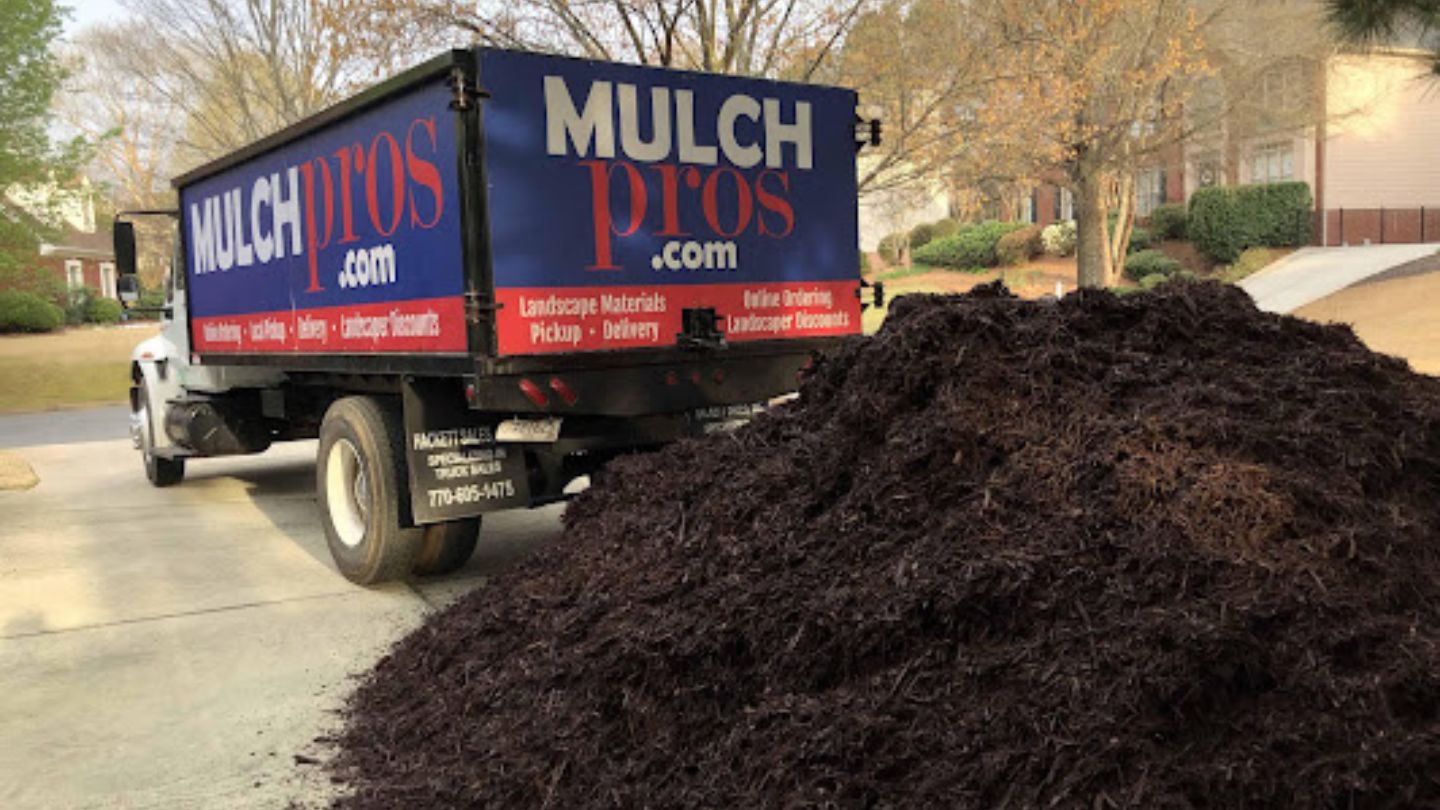
In the realm of landscaping and gardening, mulch serves critical roles that go beyond mere aesthetics. Its ability to retain soil moisture, stifle weed growth, insulate against temperature fluctuations, and prevent erosion stands as its primary contributions to a thriving garden environment. By blanketing the earth’s surface with this layer of protection, mulch not only hinders weeds but also assists in regulating soil temperature—facilitating optimal conditions for plant development. The gradual breakdown of mulch introduces beneficial organic materials into the soil.
This material is indispensable within landscape design and horticulture due to its multifaceted utilities, such as enriching soil texture, preserving water levels, or curbing unwanted vegetation—all aiding in realizing gardening objectives effectively.
A closer look at how mulch operates will be given hereafter. Examining its capabilities in maintaining hydration within the terrain along with regulation over ground warmth, we discuss both impediments against rampant flora invasion and enhancement through decomposition-led nourishment into earthy constituents.
Read more: The Groundwork for Growth: Embracing the Benefits of Mulch
Moisture Retention and Soil Temperature Regulation
Utilizing mulch presents a significant advantage in its ability to conserve soil moisture. It accomplishes this by diminishing the rate at which water evaporates, ensuring that the soil stays sufficiently moist for plant growth and health. Mulch acts as an effective shield against both wind and sunlight, amplifying its capacity to preserve moisture within the soil. It serves as an insulating blanket, keeping temperatures of the soil lower when it’s hot out and higher during cooler periods—thus aiding in controlling fluctuations in soil temperature.
By tempering variations in temperature within the earth, mulch fosters a steadier habitat conducive to the root development of plants—a crucial aspect under extreme climate conditions. The moderation brought about by mulching allows for consistent thermal levels around plant root zones, enhancing their prospects for developing robustly and vigorously due to improved growing conditions provided by regulated soil temperatures.
Weed Suppression and Soil Enrichment
Employing bark mulch is an effective method for hindering the proliferation of weeds in gardens, a frequent obstacle faced by those with green thumbs. Mulch lays out a thick barrier atop the earth, obstructing sunlight from activating weed seeds and thereby impeding their sprouting and expansion. The lessened competition from weeds permits garden plants to flourish more fully due to having unobstructed access to necessary resources like water and nutrients. To achieve maximum effectiveness against weeds, it’s recommended that bark mulch be applied uniformly across the soil at a depth ranging between 2 and 3 inches.
As it breaks down over time, mulch serves as an agent of soil amelioration. Organic varieties such as wood chips not only suppress unwanted growth but also introduce essential nutrients back into the earth—beneficial for enhancing its fertility, especially in regions facing nitrogen deficits—and thus encourage vigorous plant development.
In essence, incorporating mulch within your gardening practices establishes an environment ripe for heightened plant productivity owing to reduced weed intrusion and improved soil conditions.
Benefits of Using Bark
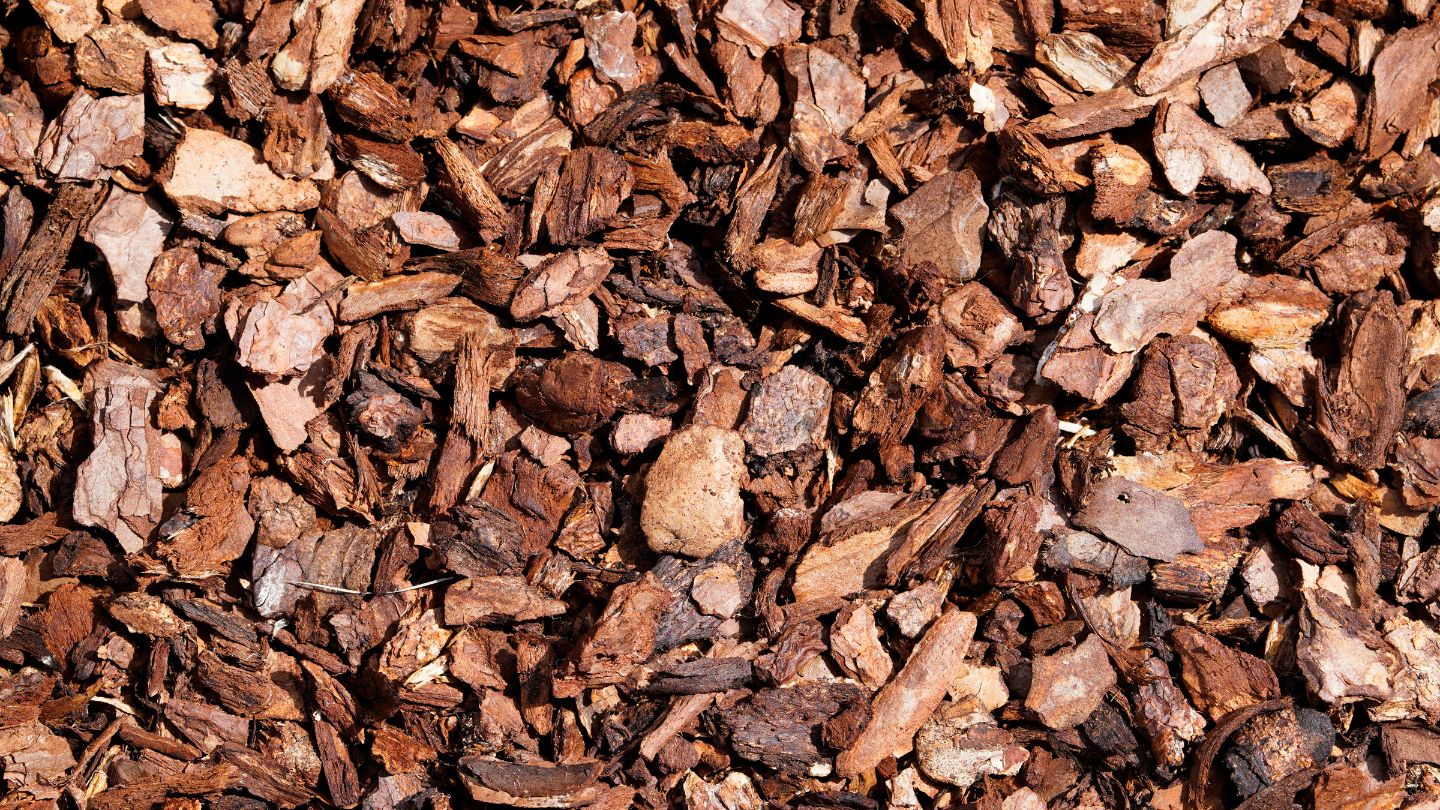
Bark mulch is highly favored by numerous gardeners due to its array of advantageous properties. It boasts a pleasing natural aesthetic along with robustness, making it capable of enduring diverse climatic conditions over extended periods. Notably, bark mulch excels as an obstruction to weed growth and significantly aids in preserving moisture within the soil—potentially cutting down water usage by more than half. It serves as a protective thermal blanket for plants amidst fluctuating temperatures.
The fusion of practicality and visual charm positions bark mulch as an ideal substance for both ornamental landscapes and walkways. Its consistent texture, coupled with a selection of hues, contributes positively to visual enhancement while concurrently promoting plant health and survival rates in gardens.
In our exploration, we will delve into the particular advantages that bark mulch brings forth, such as its resilience against weather changes. Maintenance-free nature contributes to long-term use, the capacity for effective suppression of weeds, plus the capability to insulate plant roots from harsh temperature shifts.
Durability and Longevity
Renowned for its resilience and slow decay, bark mulch stands out among other organic mulches. It can tolerate diverse weather situations without breaking down quickly, which ensures it stays effective longer than many alternatives. Its enduring quality suits high-traffic zones perfectly since it resists getting worn down by frequent footsteps.
Bark mulch has earned favorability in the landscaping realm thanks to its sturdy nature, offering gardeners a dependable choice that demands little upkeep for their garden beds and walkways. By preserving both form and aesthetics over extended periods, this type of mulch guarantees gardens continue looking orderly with hardly any maintenance required.
Effective Weed Control and Insulation
By forming a natural barrier over the soil, bark mulch serves as an exceptional deterrent to weed proliferation. It is particularly effective when spread around trees, shrubs, and in garden beds or pathways. The presence of this layer can significantly diminish the incidence of weeds, thereby curtailing the necessity for frequent manual removal or reliance on chemical herbicides—making it both an eco-conscious and convenient choice for managing unwanted plant growth.
Bark mulch acts as a protective insulator for soil temperatures, shielding plant roots from harsh climatic extremes. This insulation ensures more uniform temperature conditions within the soil, which contributes to more robust and vigorous plant development while also mitigating stress caused by thermal variation. Employing bark mulch fosters a nurturing environment that benefits overall plant health and vitality.
Choosing Between Mulch and Bark
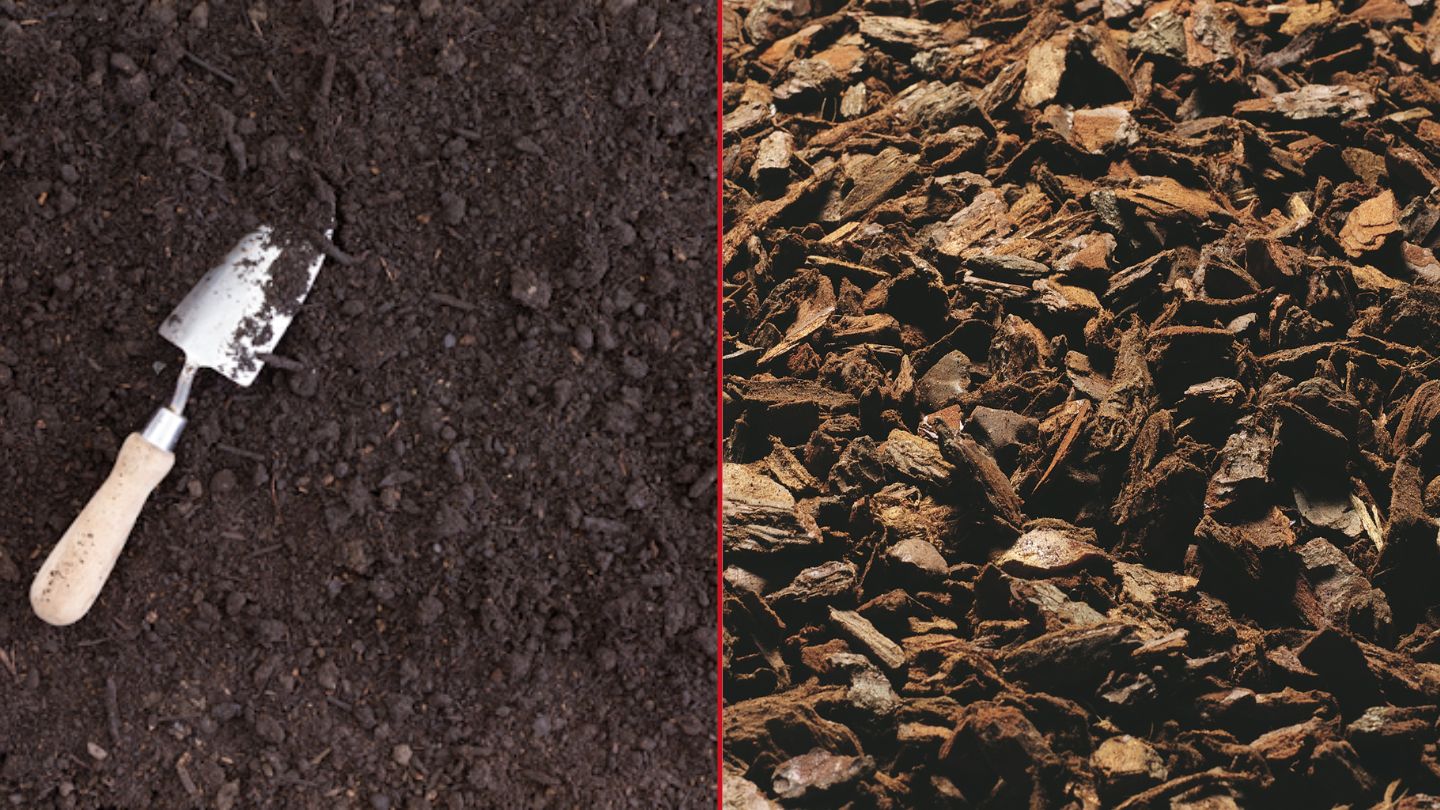
When deciding whether to use mulch or bark for your landscaping needs, it’s important to weigh the unique advantages that each brings to different gardening situations. While both mulch and bark are used to safeguard plants within a landscape, their individual properties make them appropriate for diverse uses.
Your choice will be influenced by several considerations, including expense, accessibility of the materials, and the visual style you wish to achieve in your garden space. The forthcoming discussion will delve into these elements as they pertain to choosing between mulch and bark, emphasizing optimal applications for each option.
Factors to Consider
When deciding whether to use mulch or bark for your landscaping needs, you should take into account a few key aspects, such as expense, the accessibility of supplies, and how they fit with your garden’s demands. Mulch is commonly composed of various kinds of readily available organic materials and tends to be more cost-effective when compared to bark. The latter Incurs a higher price tag because it involves stripping the tree trunk using machinery specialized for this purpose before it can be utilized in gardens.
The costs are indeed an essential consideration, especially if there’s a considerable expanse that requires coverage. This stems mainly from the requirement of employing specific machinery for detaching bark from trees, which contributes substantially to its final market price.
What your particular garden ecosystem calls for (encompassing both plant varieties present and desired visual outcomes) will significantly influence whether mulch or bark would serve best in fulfilling those needs. Weigh these factors carefully so as to ensure that whichever option you choose aligns well with what you’re aiming to achieve within your landscape design project.
Best Uses for Mulch
Mulch serves as a highly effective tool for vegetable gardens, where it functions to keep moisture in the soil and minimize weed proliferation, thereby fostering an environment conducive to robust plant growth. As it breaks down over time, mulch enriches the soil with valuable nutrients that Bolster plant vitality and increase soil fertility. For those aiming to elevate both soil quality and encourage hearty plant development, mulch stands out as a superior choice.
When it comes to flower beds, where maintaining moisture levels and combating weeds is critical, mulch proves just as beneficial. It presents a diverse natural appearance that can augment your garden’s aesthetic appeal significantly—a feature that makes it adaptable for various landscaping endeavors.
For anyone intent on cultivating either a verdant vegetable plot or an attractive bed of blooms—or perhaps even both—mulching delivers an array of advantages tailored specifically toward meeting such gardening objectives.
Best Uses for Bark
Utilizing bark mulch in landscape designs and walking paths provides both beauty and resilience to environmental conditions. It boasts a consistent look, with an assortment of hues and dimensions available for purchase, which assists in elevating the aesthetic charm of pathways and garden beds. Specifically, pine bark mulch brings forth a distinctive textural aspect that can enhance your outdoor design scheme.
Bark mulch serves as an effective means to mitigate soil densification—this attribute is particularly beneficial for areas frequented by foot traffic. The robust nature of hardwood bark mulch ensures it retains its structure and visual attractiveness over extended periods, offering a sustainable option for beautifying landscapes.
Opting for bark mulch results in creating picturesque gardens that are easy to maintain while persisting beautifully through time.
Read more: How to Mulch Around Trees: Best Practices
Making the Right Choice for Your Garden
Ultimately, the choice between mulch and bark comes down to your gardening goals and personal preferences. Mulch is an excellent option for vegetable gardens and flower beds, offering moisture retention, weed suppression, and nutrient enhancement for the soil. On the other hand, bark provides durability and aesthetic appeal, making it a top pick for ornamental landscaping and walkways. Both are valuable additions to your garden, enhancing its visual beauty while supporting its ecological health.
At Mulch Pros Landscape Supply, we’re here to help you find the perfect solution for your landscaping needs. Whether you’re enhancing your garden beds or improving walkways, we offer high-quality mulch in Alpharetta to elevate your outdoor space. Our team is dedicated to ensuring you get the right material to match your vision. Contact us to learn more about how we can support your landscaping goals!
We proudly offer our services in Cumming, Johns Creek, Milton, Sandy Springs and Rosewell. Trust us to provide the ideal materials and exceptional service to enhance outdoor projects in these areas.
Frequently Asked Questions
What is the coverage of one cubic yard of mulch at 2 inches thick?
One cubic yard of mulch at a thickness of 2 inches will cover approximately 162 square feet.
How much area does one cubic yard of mulch cover at 3 inches thick?
One cubic yard of mulch will cover an area of 108 square feet when applied at a thickness of 3 inches.
How often should I replace mulch or bark in my garden?
Mulch typically needs to be replaced every 1-2 years as it decomposes and enriches the soil, while bark mulch, due to its durability, can last 2-4 years before requiring replacement. Regular maintenance will help keep your garden looking fresh and healthy.


